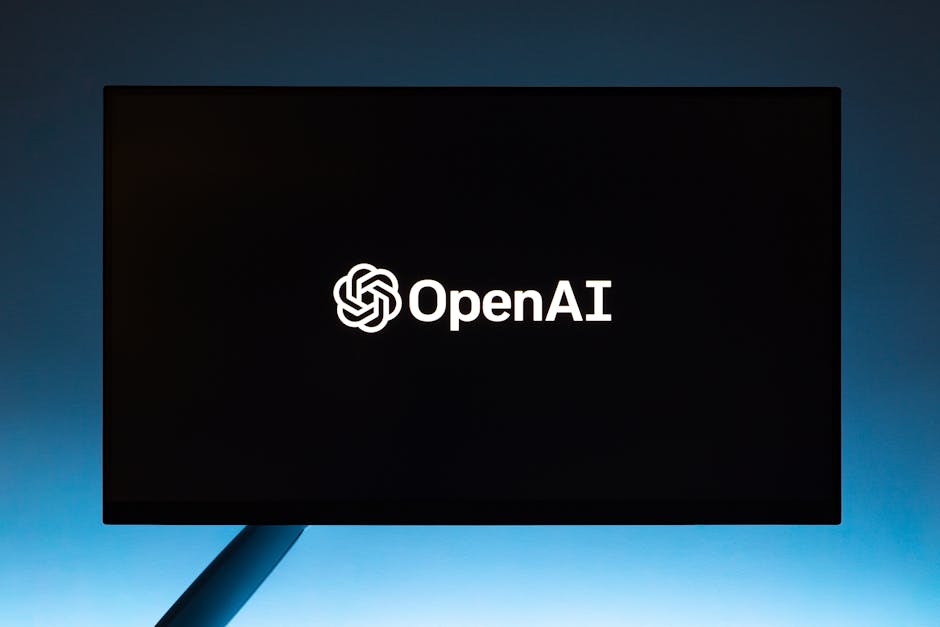Why Organic Traffic Still Reigns
Paid ads have their place, but they’re not built to last. When the budget dries up, so does the traffic. Organic search, on the other hand, is the long game. Done right, a single strong piece of content can pull in clicks for months—even years—without another dime spent. That’s ROI at its most efficient.
There’s also the trust factor. Users tend to skip past the sponsored results and click what feels earned. If your site shows up high in organic rankings, it signals credibility. People assume Google has vetted you—even if it hasn’t—and that goes a long way toward building authority in your niche.
More importantly, organic traffic isn’t just about cost savings or perception. It’s about stability. Ads fluctuate. Platforms shift. But search visibility, earned through consistent SEO practices and real value, gives you a durable pipeline of visitors who actually care about your content. Long haul strategy, short-term payoff. That’s why organic still rules the stack.
Master the Fundamentals: On-Page SEO
Building a strong SEO foundation means getting the on-page basics right. Every page element—from your title to your images—contributes to how well your content performs in search. Here’s how to fine-tune key elements:
Title Tags That Earn Clicks and Rank
Your title tag is the first thing users see in search results—it has to grab attention while staying keyword-relevant. Aim for titles that are clear, compelling, and optimized without being clickbait.
- Keep it under 60 characters to avoid truncation
- Include your target keyword naturally
- Add value-driven language (e.g., “How to,” “Best Ways,” “Ultimate Guide”)
- Ensure titles are unique across your site
Example: “10 Proven Strategies to Boost Email Open Rates”
Meta Descriptions That Drive Engagement
While meta descriptions don’t directly influence rankings, an engaging summary can increase click-through rates. Think of it as ad copy for your organic listing.
- Limit to 155–160 characters
- Incorporate your focus keyword naturally
- Tease the benefit of clicking (solve a problem, answer a question, etc.)
- Use action-oriented language
Example: “Learn simple, effective ways to improve your email marketing performance and boost your open rates fast.”
Heading Structure: Clarity for Both Users and Crawlers
Clear, consistent heading structure makes your content easy to scan—for both visitors and search engines. Organizing with proper hierarchy ensures better readability and SEO performance.
- Use only one H1 tag per page (usually the title)
- Break content into logical sections using H2s and H3s
- Include relevant keywords in headings where it makes sense
- Avoid stuffing headings with too many keywords
Image Optimization: Beyond Visuals
Images do more than enhance your content visually. Properly optimized images contribute to load speed, accessibility, and searchability.
- Compress files to improve page speed
- Use descriptive file names (e.g., “seo-on-page-basics.jpg”)
- Add meaningful alt text that describes the image
- Use responsive images for better performance on all devices
Pro Tip: Avoid using vague file names like “image123.jpg”—opt for names that reflect the content and purpose.
Mastering these fundamentals not only improves user experience but sends the right signals to search engines. It’s the groundwork that makes the rest of your SEO strategy work harder.
Target the Right Keywords
Not all traffic is good traffic. If you’re chasing broad, short-tail keywords like “fitness” or “marketing tips,” you’re competing with giants—and wasting time. These terms are vague, overloaded, and offer low conversion value unless you already have authority. Instead, go long-tail. Terms like “home workout routines for new moms” or “email marketing tips for indie authors” bring in smaller, but higher-intent audiences. They know what they’re looking for—and if your content delivers, they’ll stick around.
Knowing what people actually search for is half the job. Use free tools like Google Search Console to see what real users are already finding you for. Ubersuggest, Moz, AnswerThePublic—pick your flavor—can help you spot opportunities you never considered. Combine those with a clear content plan, and you’ve got direction. No need to guess.
Most important: match intent to format. Someone Googling “how to build a capsule wardrobe” wants a guide (informational). Someone searching “best capsule wardrobe brands under $200” is ready to buy (transactional). Make sure your content knows which game it’s playing. Right keywords, right context, right results.
Build Quality Content That Delivers
Forget tricks. SEO in 2024 is firmly grounded in value. If your content doesn’t answer real questions or solve actual problems, it won’t rank—and it won’t convert. Whether you’re writing blog posts, creating video transcripts, or fleshing out product pages, your goal is the same: be helpful. Offer clarity. Anticipate what your audience is searching for, and meet them there.
Keyword stuffing is still around, and it still doesn’t work. Google’s smarter now. Prioritize readability. Speak to humans first, and layer in your keywords where they fit naturally. Write like a pro, not a robot.
Next—consistency. SEO rewards sites that keep their content fresh. How often should you publish? As often as you can do so without dropping your standards. Once a week is solid. Twice is better. The trick is setting a rhythm you can stick to for the long haul.
Internal linking? Most people overlook it. But smart internal links keep users engaged and help search engines understand your content structure. Every key page on your site should help lead a visitor to the next relevant step. It’s good for SEO and good for user experience.
(Pro Tip: Learn how internal links support conversions with Conversion Rate Optimization Strategies and Tools)
Mobile-First and Technical SEO
In 2024, technical SEO isn’t just box-checking—it’s the backbone. Google’s algorithms prioritize mobile-first indexing now, which means if your site doesn’t treat mobile as its home turf, you’re already behind. Responsive design isn’t optional; it’s the minimum barrier to entry. If your content isn’t legible, tappable, and fast on a phone, don’t expect it to rank.
Enter Core Web Vitals. These metrics—loading speed (LCP), interactivity (FID), and visual stability (CLS)—aren’t buzzwords, they’re ranking signals. Sites that load slow, shift content around while scrolling, or lag during user interactions get penalized. Fast, stable, and smooth is the standard.
Mobile usability also goes deeper than screen fit. Clean navigation, thumb-friendly interactions, and proper structured data markup make your content more accessible to both users and crawlers. Rich snippets aren’t just cool extras—they boost visibility and click-throughs from the SERPs.
Add secure hosting (HTTPS) and clean, readable URL structures to the list. Google distrusts messy link paths or unsecured domains. Think of it like showing up to a job interview in a wrinkled shirt—you might still be the best, but you won’t get picked.
Bottom line: modern SEO is technical, and getting it right gives your content a real edge.
Earn Authority with Link Building
In 2024, link building isn’t about collecting as many backlinks as possible—it’s about earning the right ones. High-authority backlinks come from trusted, relevant sites. They show Google that your content isn’t just noise; it’s worth referencing. One link from a respected industry site carries more weight than dozens from low-quality blogs or link farms.
Forget mass emails and sketchy directories. Real outreach means offering value. If you’re reaching out, bring something to the table—expert insight, data, or a well-written guest post that fits their audience. Fluff gets deleted. Relevance gets results.
Tapping into expert roundups, collaborating on digital PR campaigns, or contributing to niche news sites still works—if done right. Think useful over promotional. Think relationships over transactions.
And once links are live, don’t ignore them. Monitor your backlink profile regularly. Flag toxic links and disavow when necessary. Not all links help; some actively hurt.
Authority isn’t built overnight. But in SEO, it’s the long game that wins.
Use Analytics and Refine Your Approach
SEO without measurement is just guessing. If you’re not tracking your rankings, click-through rates, bounce rates, and conversions, you’re flying blind. These metrics tell you what’s working and what’s wasting your time. Tools like Google Analytics and Search Console aren’t optional—they’re your dashboard for growth.
Next step: test. Don’t assume that a new headline or layout will perform better. A/B test it. Change one variable at a time. Monitor the result. Keep what works, toss what doesn’t. Small tweaks—like simplifying an intro or changing a call-to-action—can move the needle without needing a full content overhaul.
Above all, remember this: SEO isn’t a one-time project. It’s a cycle. Algorithms evolve. Search trends shift. Your content needs to adapt or it fades into the abyss. Set a schedule to revisit key pages. Rewrite. Reoptimize. Keep your site as sharp tomorrow as it is today.
Final Tips for Ongoing Organic Growth
Search isn’t static. Google’s algorithm changes constantly, and if you’re not paying attention, your rankings can vanish overnight. Stay plugged into updates—whether it’s a broad core change or a quiet tweak to how product reviews surface. Follow Google’s Search Central Blog or reputable SEO communities. You don’t need to react to every micro-shift, but you should understand the direction things are headed.
Authority isn’t built with one good blog post. It’s about depth, focus, and being the go-to voice in your niche. Pick your lane and stay in it. Publish layered, connected content that makes your site a resource—not just a one-off hit. If people start linking to you because your stuff keeps solving actual problems, Google takes notice.
And don’t treat SEO like a magic instant-hack. This is slow burn work. Rankings take time to build and even more effort to hold. Think marathon, not sprint. The creators seeing real growth in 2024 are playing the long game—investing in content that lasts and strategies that adapt.
Wrap-Up
Organic traffic continues to be the most cost-effective way to grow an online presence. No ad spend, no rental fees—just consistent value delivered to the people actively searching for what you offer. That’s why SEO isn’t just a tactic; it’s a discipline.
But here’s the thing: solid SEO isn’t an overnight win. Rankings take time. Authority builds through patience and iteration. Think of it like compound interest—each high-quality post, each technical fix, each earned backlink adds up. Slowly at first, then faster.
What separates sustainable growth from short-lived spikes is a focus on quality and relevance. Don’t chase trends. Instead, aim to be the most useful voice in your niche. Adapt when the algorithms change, double down when something works, and above all, build for your audience—not just the bots.



